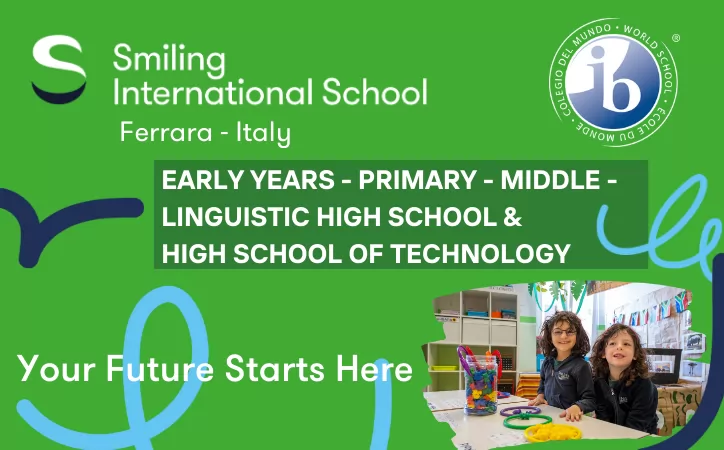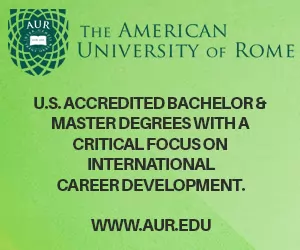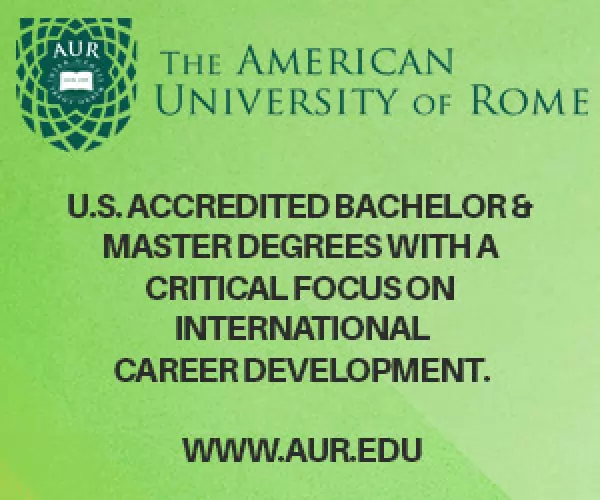International Education: The Invisible Engine Behind Global Mobility and Urban Wellbeing
by Giovanni Piccolo
What drives a family or a global company to choose one country over another? Is it the climate? The food? Tax incentives? Perhaps. But there’s another factor, less visible, yet tremendously powerful: education.
Think about it. If you had to move abroad tomorrow with your children, what would be the first question on your mind? Likely: “Where will they go to school?”
And if you were a CEO tasked with opening a European headquarters, you’d want to know not only about infrastructure and costs, but also: “Can I attract talent here? Will their families feel supported, welcome, integrated?”
These aren’t peripheral concerns—they’re central. Quality international education is not only a human right, as outlined in the UN’s Sustainable Development Goal 4 (SDG4), but also a key lever for economic growth, urban wellbeing, and a country’s global competitiveness.
Education as a Strategic Asset
SDG4 aims to “ensure inclusive and equitable quality education and promote lifelong learning opportunities for all.” But this goal is about more than just building schools. It’s about turning schools into engines of opportunity, places where talent is discovered and nurtured, regardless of birthplace, nationality, or socioeconomic status.
International schools are increasingly fulfilling this role. With over 13,000 such schools in 236 countries serving more than 6 million students, they are becoming hubs of academic excellence and cultural exchange. These schools often follow globally recognized programs like the International Baccalaureate and are no longer exclusive to elite expatriates. More and more local families are choosing international education to prepare their children for a complex, interconnected world, one that demands intercultural fluency, critical thinking, and cognitive flexibility.
A report from the World Economic Forum noted that countries with strong, internationalized education systems tend to attract higher levels of foreign investment. Why? Because businesses go where human capital can thrive. And that journey starts with school.
Talent Attraction Starts with School Choice
Picture a couple of engineers, doctors, or researchers considering a move abroad. Their checklist might include safety, healthcare, and infrastructure, but often, the deciding factor is a quality school for their children. If they can’t find one, they may decline the offer.
That’s why international education is critical to talent relocation strategies. Cities that have become magnets for global professionals understand this well. International schools can also play a role in broader urban wellbeing. They open their doors to local communities, share sustainable teaching practices, and partner with universities, museums, and civic groups. They don’t just educate students, they build bridges across cultures and systems, fostering cohesion and mutual understanding.
Examples from around the world illustrate how strategic investments in education can shape a city’s future. Singapore, for instance, began investing heavily in teacher training and curriculum reform decades ago. Today, it hosts over 60 international schools and ranks among the world’s most competitive economies, while also being one of its most livable cities.
Similarly, Dubai has seen exponential growth in international schools, thanks to forward-looking government policies. Families from more than 150 countries now call it home, drawn by a school system that integrates, inspires, and prepares.
And the benefits extend beyond the expat community. International schools raise the bar for local education systems by promoting bilingualism, collaboration, and innovation.
Education and Economic Development Go Hand in Hand
From a business perspective, the presence of quality education, both K-12 and higher ed, is among the top five factors influencing multinational companies’ investment decisions, according to the World Bank.
Ireland offers a case in point. Once known for an underperforming education system, it transformed itself into a hub for the tech industry. Global giants like Google, Facebook, and Apple now call it home—not just for tax reasons, but because of its skilled, educated workforce and strong ties between schools, universities, and the private sector.
Cities like Milan have also recognized this dynamic. Over the past decade, the number of international schools there has grown significantly, making the city more attractive to companies seeking a European base. Talented people choose to live where they can thrive, and that includes access to excellent education for their children.
Rome’s Opportunity: Education as a Driver of Urban Renaissance
Rome, with its deep cultural roots, international presence, and evolving global outlook, is uniquely positioned to become a leading European hub for educational excellence.
As the city seeks to attract international talent and investment, education should be at the heart of its strategy. International schools, when integrated into the local urban fabric—can serve not only their own student bodies, but also the broader community. Through open events, sustainable practices, and collaborations with universities, cultural institutions, and public authorities, these schools can become engines of shared wellbeing.
A compelling example of this type of initiative, which expands opportunities for public school systems, is Acorn International School’s Project Moonshot—an interdisciplinary STEM program developed in collaboration with NASA and the Houston Space Center. AIS was the first school in the world to launch such a program, which has since been extended to Italian state schools, engaging over 800 students and 60 public school teachers to date.
Rome has everything it takes to lead: a growing ecosystem of schools, a global reputation, and a network of engaged educators and civic leaders. By recognizing international education as part of the city’s core infrastructure, not as a private good, but a shared resource, it can build a future that is inclusive, innovative, and sustainable.
So here’s the real question for Rome, and for every city with global ambition:
What can we do, as citizens, educators, investors, and policymakers, to strengthen the link between high-quality education, sustainable development, and collective wellbeing?
In the 21st century, the most powerful infrastructure is not made of steel or glass.
It’s built each morning when a school door opens and a child steps inside.
This kind of infrastructure doesn’t show up on satellite maps. It’s rooted in human connection, in the teacher who listens, the question that sparks thought, the classroom that welcomes wonder. It fuels a desire not just for knowledge, but for justice, beauty, and truth.
The future of our cities is being shaped not only in boardrooms or laboratories, but in classrooms, where students, with the help of dedicated educators, imagine what has yet to be built.
Rome, like other cities that have dared to reimagine their educational ecosystems, has the chance to lead, not just in history, but in possibility.





















